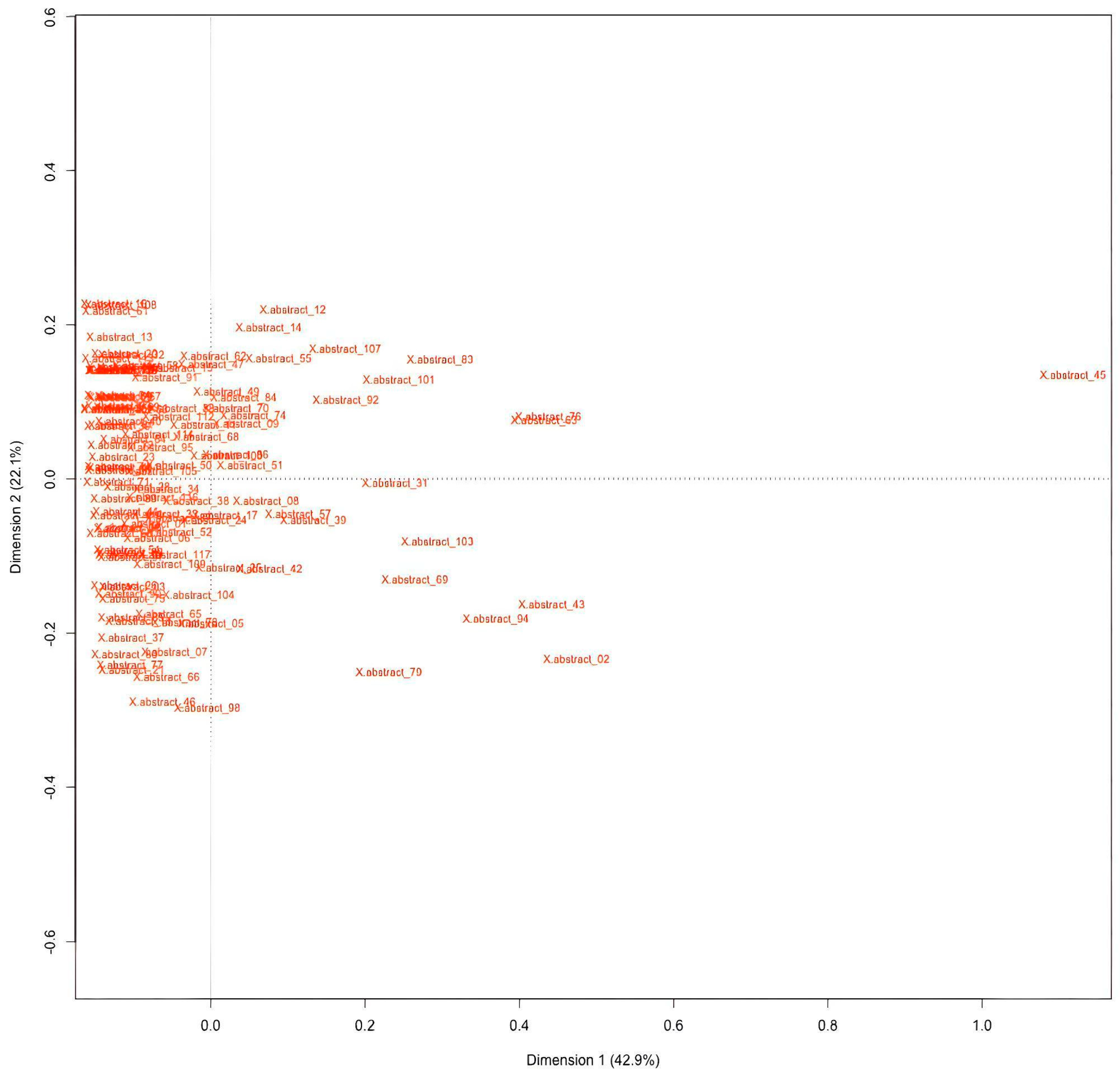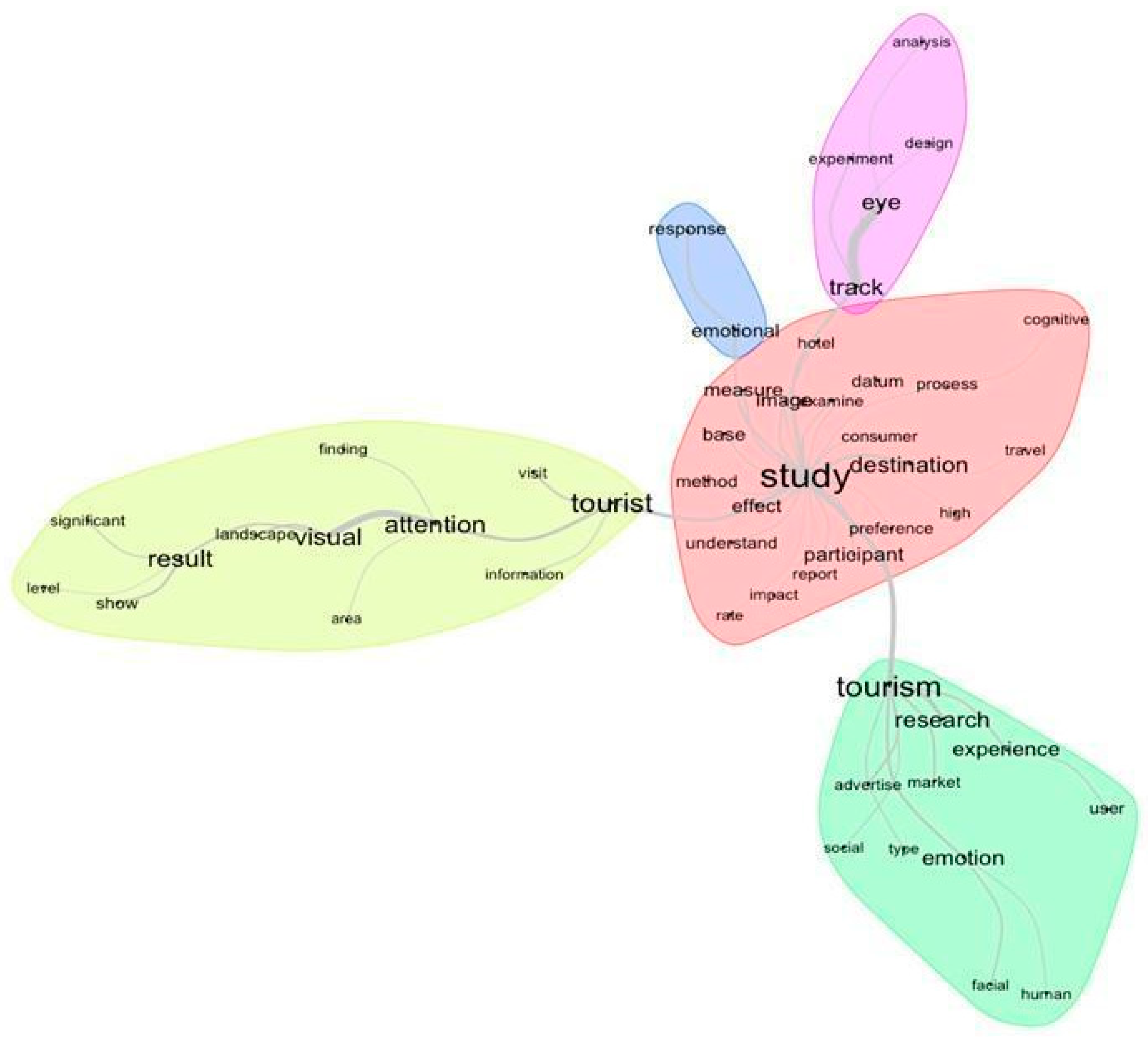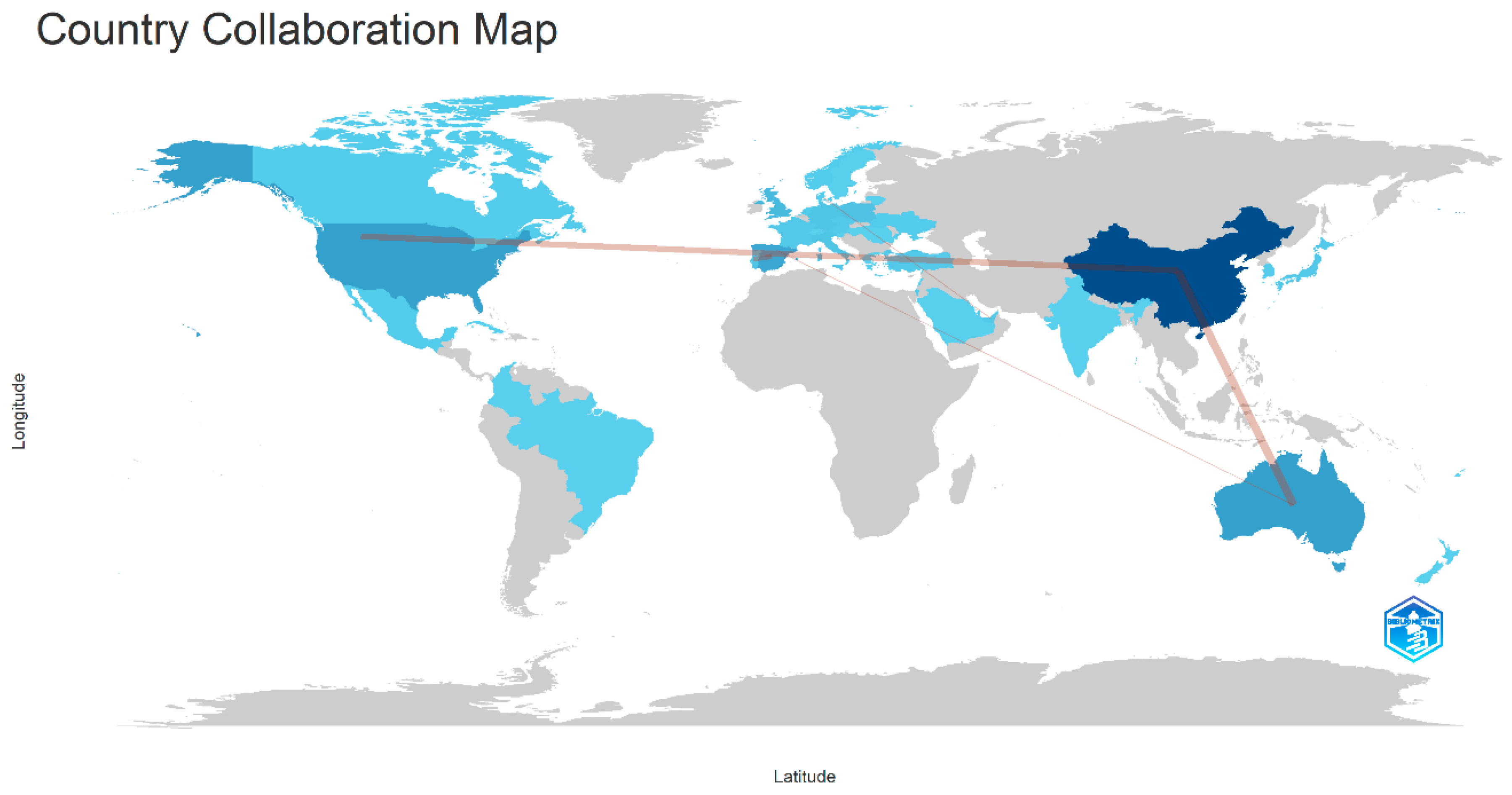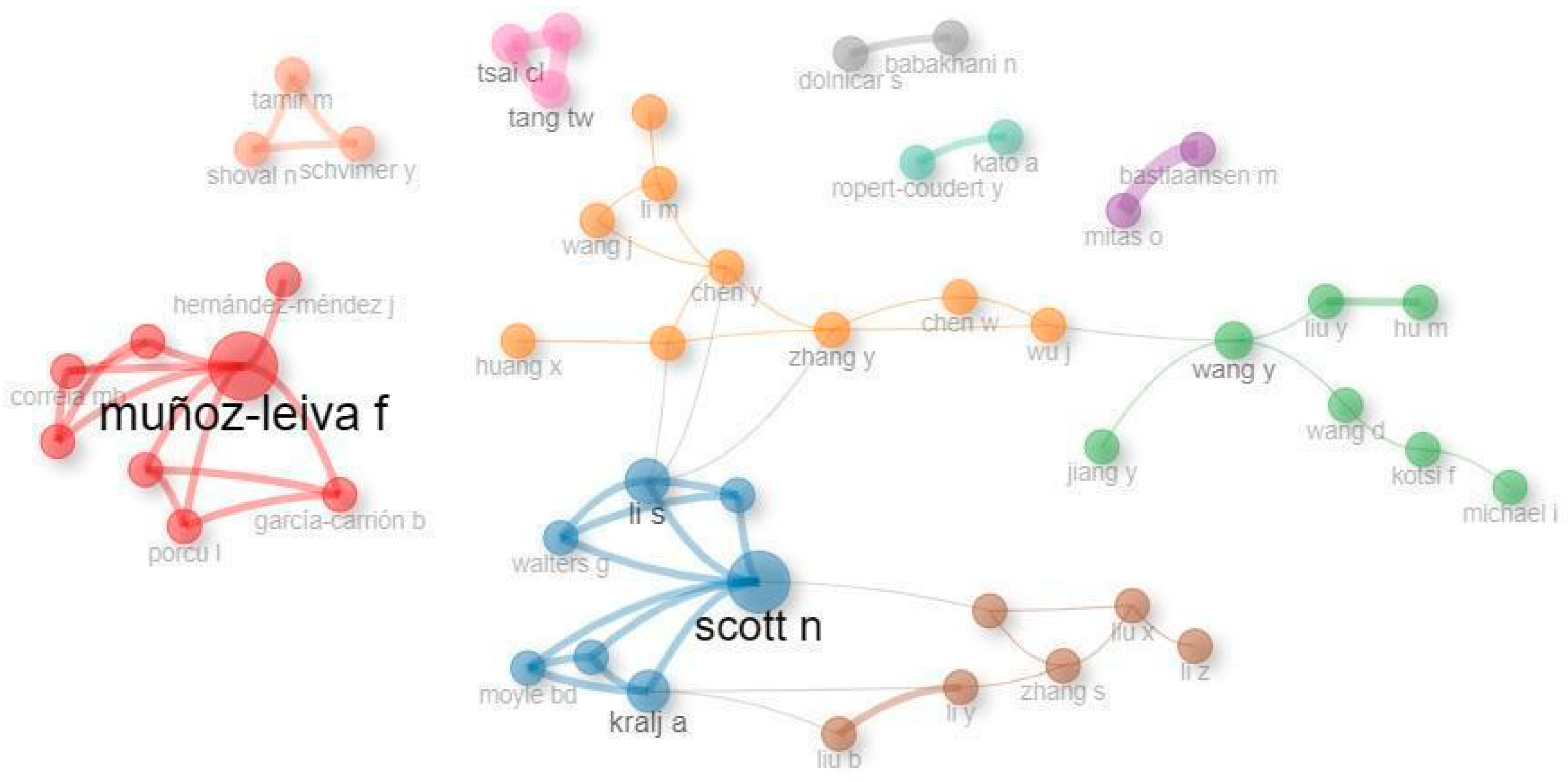Shaping the Future of Destinations: New Clues to Smart Tourism Research from a Neuroscience Methods Approach
Abstract
1. Introduction
2. Theoretical Background
2.1. Neuroscientific Methods and Tourism—The Role of Technology
2.2. Shaping Future Destination—Smart Tourism Experiences and Neuroscientific Methods Approaches
3. Methods, Techniques and Procedures
3.1. Methods and Techniques Used
3.2. Data Collection and Organization
4. Findings and Discussion Results
4.1. The Interconnection of the Most Relevant Topics That Use Neuroscientific Methods in Smart Tourism
4.2. The Research Networks Using Neuroscientific Methods in Smart Tourism
4.3. Neuroscientific Methods and Metrics Applied to Shaping the Future of Destination with a View to Smart Tourism
4.4. Limitations, Theoretical and Practical Implications and Future Research Directions
“City authorities increasingly favor new data-driven and technology-enabled approaches to governing smart cities, with the aim that governments will be enabled to pursue evidence-based urban well-being policies. Yet there are few signs that our cities are undergoing the transformative, structural changes necessary to promote well-being” (p. 1936).
5. Conclusions
Author Contributions
Funding
Institutional Review Board Statement
Informed Consent Statement
Conflicts of Interest
References
- Al-Nafjan, Abeer, Mashael Aldayel, and Amira Kharrat. 2023. Systematic Review and Future Direction of Neuro-Tourism Research. Brain Sciences 13: 682. [Google Scholar] [CrossRef] [PubMed]
- Anita, Tiurida Lily, Wijaya Lianna, Elang Kusumo, and Santi. 2021. Smart Tourism Experiences: Virtual Tour on Museum. Paper presented at the 11th Annual International Conference on Industrial Engineering and Operations Management, Singapore, March 7–11. [Google Scholar]
- Bastiaansen, Marcel, Monique Oosterholt, Ondrej Mitas, Danny Han, and Xander Lub. 2022a. An emotional roller coaster: Electrophysiological evidence of emotional engagement during a roller-coaster ride with virtual reality add-on. Journal of Hospitality & Tourism Research 46: 29–54. [Google Scholar]
- Bastiaansen, Marcel, Sebastiaan Straatman, Ondrej Mitas, Jeroen Stekelenburg, and Saskia Jansen. 2022b. Emotion measurement in tourism destination marketing: A comparative electroencephalographic and behavioral study. Journal of Travel Research 61: 252–64. [Google Scholar] [CrossRef]
- Bastiaansen, Marcel, Xander Dennis Lub, Ondrej Mitas, Timothy Hyungsoo Jung, Mário Passos Ascenção, Dai-In Han, Teemu Moilanen, Bert Smit, and Wim Strijbosch. 2019. Emotions as core building blocks of an experience. International Journal of Contemporary Hospitality Management 31: 651–8. [Google Scholar] [CrossRef]
- Bear, Mark, Barry Connors, and Michael A. Paradiso. 2017. Neurociências: Desvendando o Sistema Nervoso. Porto Alegre: Artmed. [Google Scholar]
- Beck, Julia, and Roman Egger. 2018. Emotionalise me: Self-reporting and arousal measurements in virtual tourism environments. In Information and Communication Technologies in Tourism 2018, in the International Conference, Jönköping, Sweden, January 24–26. Cham: Springer International Publishing, pp. 3–15. [Google Scholar] [CrossRef]
- Buonincontri, Piera, and Roberto Micera. 2016. The experience co-creation in smart tourism destinations: A multiple case analysis of European destinations. Information Technology & Tourism 16: 285–315. [Google Scholar]
- Cardoso, Lucília, Arthur Araújo, Rui Silva, Giovana Goretti Feijó de Almeida, Filipa Campos, and Luís Lima Santos. 2024. Demystifying neurotourism: An interdisciplinary approach and research agenda. European Journal of Tourism Research 36: 3618. [Google Scholar] [CrossRef]
- Cardoso, Lucilia, Meng-Mei Chen, Arthur Araújo, Giovana Gorreti Feijó de Almeida, Francisco Dias, and Luiz Moutinho. 2022. Accessing Neuromarketing Scientific Performance: Research Gaps and Emerging Topics. Behavioral Sciences 12: 55. [Google Scholar] [CrossRef] [PubMed]
- Cardoso, Lucília, Rui Silva, Giovana Gorreti Feijó de Almeida, and Luís Lima Santos. 2020. A bibliometric model to analyze country research performance: Scival topic prominence approach in tourism, leisure and hospitality. Sustainability 12: 9897. [Google Scholar] [CrossRef]
- Cerf, Moran. 2017. Methods. In Consumer Neuroscience. Edited by Moran Cerf and Manuel Garcia-Garcia. Cambridge: MIT Press, pp. 63–102. [Google Scholar]
- Cheng, Mingming, Deborah Edwards, Simon Darcy, and Kylie Redfern. 2018. A Tri-Method Approach to a Review of Adventure Tourism Literature: Bibliometric Analysis, Content Analysis, and a Quantitative Systematic Literature Review. Journal of Hospitality & Tourism Research 42: 997–1020. [Google Scholar]
- Coelho, Mariana, Jéssica Maria Moreira Lopes, and Carla Conceição Lana Fraga. 2023. Por uma nova agenda de pesquisa em Turismo e Neurociências: Como a memória tem sido incorporada em estudos de experiência turística? Revista de Turismo Contemporâneo 11: 2023. [Google Scholar] [CrossRef]
- Dabas, Harch, Chaitanya Sethi, Chirag Dua, Mohit Dalawat, and Divyashikha Sethia. 2018. Emotion classification using EEG signals. Paper presented at the CSAI’18: Proceedings of the 2018 2nd International Conference on Computer Science and Artificial Intelligence, Shenzhen, China, December 8–10. [Google Scholar]
- Damásio, Antonio. 2004. Emotions and feelings: A neurobiological perspective. In Feelings and Emotions. Edited by Antony S. R. Manstead, Nico Frijda and Agneta Fischer. Cambridge: Cambridge University Press, pp. 49–57. [Google Scholar]
- Dinh-Dang, Duyen, Abdullah Khafagy, Niklas Krause, and Carisa Harris-Adamson. 2023. Assessment of cardiovascular load among hotel room cleaners. Applied Ergonomics 106: 103886. [Google Scholar] [CrossRef] [PubMed]
- Duran, Gizem, and Selma Meydan Uygur. 2022. A Comprehensive Systematic Literature Review About Smartness in Tourism. In Handbook of Research on Digital Communications, Internet of Things, and the Future of Cultural Tourism. Hershey: IDI Global. [Google Scholar]
- El Archi, Youssef, Brahim Benbba, Moaaz Kabil, and Lóránt Dénés Dávid. 2023. Digital Technologies for Sustainable Tourism Destinations: State of the Art and Research Agenda. Administrative Sciences 13: 184. [Google Scholar] [CrossRef]
- Espigares-Jurado, Francisco, Francisco Munoz-Leiva, Marisol B. Correia, Carlos MR Sousa, Célia M. Q. Ramos, and Luís Faísca. 2020. Visual attention to the main image of a hotel website based on its position, type of navigation and belonging to Millennial generation: An eye tracking study. Journal of Retailing and Consumer Services 52: 101906. [Google Scholar] [CrossRef]
- Flavián, Carlos, Sergio Ibáñez-Sánchez, and Carlos Orús. 2020. Impacts of technological embodiment through virtual reality on potential guests’ emotions and engagement. Journal of Hospitality Marketing & Management 30: 1–20. [Google Scholar]
- Fraga, Carla, and Airton Rodrigues. 2021. Chapter 3 New Clues for Tourism Planning and Management from Consumer Neuroscience. Edited by Nikolaos Pappas and Anna Farmaki. Oxford: Goodfellow Publishers. [Google Scholar] [CrossRef]
- Fronda, Giulia, Federico Cassioli, Roberta Sebastiani, Annalisa Beatrice Galeone, and Michaela Balconi. 2021. Paint it green: A neuroscientific approach to hotel sustainability and ecological tourism. Environment, Development and Sustainability 23: 15513–28. [Google Scholar] [CrossRef]
- Fu, Hao, Pohsun Wang, Junling Zhou, Shuyuan Zhang, and Yan Li. 2023. Investigating Influence of Visual Elements of Arcade Buildings and Streetscapes on Place Identity Using Eye-Tracking and Semantic Differential Methods. Buildings 13: 1580. [Google Scholar] [CrossRef]
- García-Carrión, Beatriz, Francisco Muñoz-Leiva, Salvador Del Barrio-García, and Lucia Porcu. 2024. The effect of online message congruence, destination-positioning, and emojis on users’ cognitive effort and affective evaluation. Journal of Destination Marketing & Management 31: 100842. [Google Scholar]
- García-Carrión, Beatriz, Salvador Del Barrio-García, Francisco Muñoz-Leiva, and Lucia Porcu. 2023. Effect of social-media message congruence and generational cohort on visual attention and information-processing in culinary tourism: An eye-tracking study. Journal of Hospitality and Tourism Management 55: 78–90. [Google Scholar] [CrossRef]
- Garcia-Garcia, Manuel. 2017. Attention. In Consumer Neuroscience. Edited by Moran Cerf and Manuel Garcia-Garcia. Cambridge: MIT Press, pp. 103–21. [Google Scholar]
- Genç, Ruet. 2018. The Impact of Augmented Reality (AR) Technology on Tourist Satisfaction. In Augmented Reality and Virtual Reality. Progress in IS. Edited by Timothy Jung and M. Tom Dieck. Cham: Springer. [Google Scholar] [CrossRef]
- Giudici, Ernestina, Angela Dettori, and Federica Caboni. 2017. Neurotourism: Futuristic perspective or today’s reality. Paper preseted at 20th Excellence in Services International Conference, Verona, Italy, September 7–8; Verona: University of Verona. ISBN 9788890432774. [Google Scholar]
- Hadinejad, Arghavan, Brent D. Moyle, Anna Kralj, and Noel Scott. 2019a. Physiological and self-report methods to the measurement of emotion in tourism. Tourism Recreation Research 44: 466–78. [Google Scholar] [CrossRef]
- Hadinejad, Arghavan, Brent D. Moyle, Noel Scott, and Anna Kralj. 2019b. Emotional responses to tourism advertisements: The application of FaceReader™. Tourism Recreation Research 44: 131–35. [Google Scholar] [CrossRef]
- Hassenzahl, Marc Arghavan, Annika Wiklund-Engblom, Anette Bengs, Susanne Hägglund, and Sarah Diefenbach. 2015. Experience-Oriented and Product-Oriented Evaluation: Psychological Need Fulfillment, Positive Affect, and Product Perception. International Journal of Human-Computer Interaction 31: 530–44. [Google Scholar] [CrossRef]
- Hernández-Méndez, Janete, and Francisco Muñoz-Leiva. 2015. What type of online advertising is most effective for eTourism 2.0? An eye tracking study based on the characteristics of tourists. Computers in Human Behavior 50: 618–25. [Google Scholar] [CrossRef]
- Hong, Wilson Cheong Hin, Henrique Fátima Boyol Ngan, Joanne Yu, and Ying Zhao. 2022. An Eye-Tracking Study of Exoticism in Intra-National Destinations in the Greater Bay Area of China. Tourism Recreation Research 47: 414–27. [Google Scholar] [CrossRef]
- Hosany, Sameer, Drew Martin, and Arch G. Woodside. 2020. Emotions in Tourism: Theoretical Designs, Measurements, Analytics, and Interpretations. Journal of Travel Research 60: 1391–407. [Google Scholar] [CrossRef]
- Hunter, William Cannon, Chung Namho, Ulrike Gretzel, and Chulmo Koo. 2015. Constructivist research in smart tourism. Asia Pacific Journal of Information Systems 25: 105–20. [Google Scholar] [CrossRef]
- Jeong, Miyoung, and Hyejo Hailey Shin. 2020. Tourists’ experiences with smart tourism technology at smart destinations and their behavior intentions. Journal of Travel Research 59: 1464–77. [Google Scholar] [CrossRef]
- Jovicic, Dobrica. 2019. From the traditional understanding of tourism destination to the smart tourism destination. Current Issues in Tourism 22: 276–82. [Google Scholar] [CrossRef]
- Kandel, Eric R. 2020. Mentes Diferentes. O que Cérebros Incomuns Revelam Sobre Nós. Barueri: Manole. [Google Scholar]
- Kohli, Varun, Utkarsh Tripathi, Vinay Chamola, Bijay Kumar Rout, and Salil S. Kanhere. 2022. A review on Virtual Reality and Augmented Reality use-cases of Brain Computer Interface based applications for smart cities. Microprocessors and Microsystems 88: 104392. [Google Scholar] [CrossRef]
- Kong, Shaojun, Zhenfang Huang, Noel Scott, Zi’ang Zhang, and Zhixiang Shen. 2019. Web advertisement effectiveness evaluation: Attention and memory. Journal of Vacation Marketing 25: 130–46. [Google Scholar] [CrossRef]
- Köseoglu, Mehmet Ali, Roya Rahimi, Fevzi Okumus, and Jingyan Liu. 2016. Bibliometric Studies in Tourism. Annals of Tourism Research 61: 180–98. [Google Scholar]
- Lang, P. J. 1995. The Emotion Probe: Studies of Motivation and Attention. American Psychologist 50: 372–85. [Google Scholar] [CrossRef] [PubMed]
- Latorre, Marino. 2018. Historia de las Web 1.0, 2.0, 3.0 y 4.0. Lince: Universidad Marcelino Champagnat. Available online: https://acesse.dev/CTVPi (accessed on 21 March 2024).
- Lévy, Pierre. 1996. O Que é Virtual? Rio de Janeiro: Editora, p. 34. [Google Scholar]
- Li, Shanshi, Billy Sung, Yuxia Lin, and Ondrej Mitas. 2022a. Electrodermal activity measure: A methodological review. Annals of Tourism Research 96: 103460. [Google Scholar] [CrossRef]
- Li, Shanshi, Gabby Walters, Jan Packer, and Noel Scott. 2018. Using skin conductance and facial electromyography to measure emotional responses to tourism advertising. Current Issues in Tourism 21: 1761–83. [Google Scholar] [CrossRef]
- Li, ShiNa, Robin Chark, Marcel Bastiaansen, and Emma Wood. 2023. A review of research into neuroscience in tourism: Launching the annals of tourism research curated collection on neuroscience in tourism. Annals of Tourism Research 101: 1–19. [Google Scholar] [CrossRef]
- Li, ShiNa, Ting Lyu, MengXin Chen, and PuYue Zhang. 2022b. The Prospects of Using EEG in Tourism and Hospitality Research. Journal of Hospitality & Tourism Research 46: 189–211. [Google Scholar] [CrossRef]
- Lima Santos, Luis, Lucilia Cardoso, Noelia Araújo-Vila, and Jose Antonio Fraiz-Brea. 2020. Sustainability Perceptions in Tourism and Hospitality: A Mixed-Method Bibliometric Approach. Sustainability 12: 8852. [Google Scholar] [CrossRef]
- Marchiori, Elena, Evangelos Niforatos, and Luca Preto. 2018. Analysis of users’ heart rate data and self-reported perceptions to understand effective virtual reality characteristics. Information Technology & Tourism 18: 133–55. [Google Scholar] [CrossRef]
- Marci, Carl, and Brendan Murray. 2017. Emotions. In Consumer Neuroscience. Edited by Moran Cerf and Manuel Garcia-Garcia. Cambridge: MIT Press, pp. 151–76. [Google Scholar]
- Mitas, Ondrej, Helena Mitasova, Garrett Millar, Wilco Boode, Vincent Neveu, Moniek Hover, Frank van den Eijnden, and Marcel Bastiaansen. 2022. More is not better: The emotional dynamics of an excellent experience. Journal of Hospitality & Tourism Research 46: 78–99. [Google Scholar]
- Moyle, Brent, Char-lee Moyle, Alexandra Bec, and Noel Scott. 2019. The next frontier in tourism emotion research. Current Issues in Tourism 22: 1393–99. [Google Scholar] [CrossRef]
- Muñoz-Leiva, Francisco, Janet Hernández-Méndez, and Diogo Gómez-Carmona. 2019. Measuring advertising effectiveness in Travel 2.0 websites through eye-tracking technology. Physiology & Behavior 200: 83–95. [Google Scholar]
- Muñoz-Leiva, Francisco, Luís Miguel Faísca, Célia M. Q. Ramos, Marisol B. Correia, Carlos M. R. Sousa, and Marouan Bouhachi. 2021. The influence of banner position and user experience on recall. The mediating role of visual attention. Spanish Journal of Marketing-ESIC 25: 85–114. [Google Scholar] [CrossRef]
- Nieuwenhuis, Ingrid L. C. 2017. Memory. In Consumer Neuroscience. Edited by Moran Cerf and Manuel Garcia-Garcia. Cambridge: MIT Press, pp. 133–50. [Google Scholar]
- Nohutlu, Zeynep Didem, Basil Englis, Aard J. Groen, and Efthymios Constantinides. 2022. Customer cocreation experience in online communities: Antecedents and outcomes. European Journal of Innovation Management 25: 630–59. [Google Scholar] [CrossRef]
- Pahlevan-Sharif, Saeed, Paolo Mura, and Sarah N.R. Wijesinghe. 2019. A systematic review of systematic reviews in tourism. Journal of Hospitality and Tourism Management 39: 158–65. [Google Scholar] [CrossRef]
- PAHO. 2023. OMS Declara fim da Emergência de Saúde Pública de Importância Internacional Referente à COVID-19. 5th of May. Available online: https://encurtador.com.br/iktKU (accessed on 12 March 2024).
- Pai, Chen-Kuo, Yumeng Liu, Sanggyk Kang, and Anna Dai. 2020. The role of perceived smart tourism technology experience for tourist satisfaction, happiness and revisit intention. Sustainability 12: 6592. [Google Scholar] [CrossRef]
- Panyik, Emese, and José Gonçalves. 2017. Neurotourism A paradigm shift in travel on the intersection of e-tourism and neuroscience. Revista Turismo & Desenvolvimento 27: 321–23. [Google Scholar]
- Penz, Elfriede, Eva Hofmann, and Barbara Hartl. 2017. Fostering Sustainable Travel Behavior: Role of Sustainability Labels and Goal-Directed Behavior Regarding Touristic Services. Sustainability 9: 1056. [Google Scholar] [CrossRef]
- Picard, R. W. 2000. Affective Computing. Cambridge: MIT Press. [Google Scholar]
- Platov, Alexey V., Munir Kalemulloev, Shakhlo S. Zikirova, and Elena N. Lysoivanenko. 2021. Building the tourist experience of visitors to sustainable smart tourist destinations. SHS Web of Conferences 94: 04007. [Google Scholar] [CrossRef]
- Podstawski, Robert, Grzegorz Bielec, Krzysztof Borysławski, Zoltán Alföldi, and Arkadiusz Marzec. 2022. Changes in the blood pressure, heart rate and body mass of physically active men in response to thermal stress. Central European Journal of Sport Sciences and Medicine 37: 65–76. [Google Scholar] [CrossRef]
- Prayag, Girish, Sameer Hosany, and Khaled Odeh. 2013. The role of tourists’ emotional experiences and satisfaction in understanding behavioral intentions. Journal of Destination Marketing and Management 2: 118–27. [Google Scholar] [CrossRef]
- Pykett, Jessica, Tess Osborne, and Bernd Resch. 2020. From Urban Stress to Neurourbanism: How Should We Research City Well-Being? Annals of the American Association of Geographers 110: 1936–51. [Google Scholar] [CrossRef]
- Rooney, Anne. 2018. A História das Neurociências. São Paulo: M.Books. [Google Scholar]
- Roskies, Adina. 2002. Neuroethics for the New Millenium. Neuron 35: 21–23. [Google Scholar] [CrossRef]
- Russell, James A. 1989. Measures of emotions. In The Measurement of Emotions. Cambridge: Academic Press, pp. 83–111. [Google Scholar] [CrossRef]
- Salviati, Maria Elisabeth. 2017. Manual do Aplicativo Iramuteq (versão 0.7 Alpha 2 e R Versão 3.2.3). March of 2017. Planaltina. Available online: https://acesse.dev/0uuGX (accessed on 5 March 2024).
- Santamaria-Granados, Luz, Juan Francisco Mendoza-Moreno, Angela Chantre-Astaiza, Mario Munoz-Organero, and Gustavo Ramirez-Gonzalez. 2021. Tourist experiences recommender system based on emotion recognition with wearable data. Sensors 21: 7854. [Google Scholar] [CrossRef]
- Scott, Noel. 2020. Cognitive psychology and tourism—Surfing the “cognitive wave”: A perspective article. Tourism Review 75: 49–51. [Google Scholar] [CrossRef]
- Shoval, Noel, Yonatan Schvimer, and Maya Tamir. 2018. Tracking technologies and urban analysis: Adding the emotional dimension. Cities 72: 34–42. [Google Scholar] [CrossRef]
- Soliman, Mohammad, Lucília Cardoso, Giovana Feijó de Almeida, Arthur Araújo, and Noelia Vila. 2021. Mapping smart experiences in tourism: A bibliometric approach. European Journal of Tourism Research 28: 2809. [Google Scholar] [CrossRef]
- Spillman, William B. 2020. Smart Structures. In Encyclopedia of Continuum Mechanics. Cham: Springer. [Google Scholar]
- Štreimikienė, Dalia, Biruta Švagždienė, Edmundas Jasinskas, and Arturas Simanavicius. 2020. Sustainable tourism development and competitiveness: The systematic literature review. Sustainable Development 29: 259–71. [Google Scholar] [CrossRef]
- Tasci, Aslia D. A. 2019. Holistic theory development in tourism and hospitality: A perspective article. Tourism Review 75: 37–40. [Google Scholar] [CrossRef]
- Tham, Aaron, Vikki Schaffer, and Laura Sinay. 2021. The ethics of experimental research employing intrusive technologies in tourism: A collaborative ethnography perspective. Tourism and Hospitality Research 21: 303–16. [Google Scholar] [CrossRef]
- United Nations Development Programme—UNDP. 2024. Forging a Global South United Nations Day for South-South Cooperation. December 19. Available online: https://www.undp.org/sites/g/files/zskgke326/files/migration/cn/UNDP-CH-PR-Publications-UNDay-for-South-South-Cooperation.pdf (accessed on 13 March 2024).
- Urry, John, and Jonas Larsen. 2021. O Olhar do Turista 3.0. São Paulo: SESC. [Google Scholar]
- Wang, Dan, Sangwon Park, and Daniel. R. Fesenmaier. 2012. The role of smartphones in mediating the touristic experience. Journal of Travel Research 51: 371–87. [Google Scholar] [CrossRef]
- Wang, Ying, and Beverley A. Sparks. 2016. An eye-tracking study of tourism photo stimuli: Image characteristics and ethnicity. Journal of Travel Research 55: 588–602. [Google Scholar] [CrossRef]
- Wise, Nicholas, and Hadi Heidari. 2019. Developing smart tourism destinations with the internet of things. In Big Data and Innovation in Tourism, Travel, and Hospitality: Managerial Approaches, Techniques, and Applications. Cham: Springer, pp. 21–29. [Google Scholar]
- Yung, Ryan, Catherune Khoo-Lattimore, and Leigh Ellen Potter. 2021. VR the world: Experimenting with emotion and presence for tourism marketing. Journal of Hospitality and Tourism Management 46: 160–71. [Google Scholar] [CrossRef]
- Zhao, Ton, Ipkin Aanthony Wong, Pan Tong, Nao Li, and Xiong Xiling. 2022. Gazing at the gazers: An investigation of travel advertisement modality interference. Journal of Travel Research 61: 730–46. [Google Scholar] [CrossRef]
- Zoëga Ramsøy, Thomas, Noela Michael, and Ian Michael. 2019. A consumer neuroscience study of conscious and subconscious destination preference. Scientific Reports 9: 15102. [Google Scholar] [CrossRef]





| Method | What Can Be Studied | Mobility (for Marketing Studies) |
|---|---|---|
| EEG with many electrodes (>32) | Emotion, memory, attention, engagement | Not optimal, but possible |
| EEG with few electrodes | Emotion, engagement | Possible |
| fMRI | Emotion, memory, attention, engagement, pricing, reward, pain | Impossible |
| TMS [transcranial magnetic stimulation] | Accessibility to functions such as emotions, cognition, and executive functions | Not used previously; possible but is not necessary |
| Surveys | Subjective/perceived emotion, memory, subject/perceived engagement, estimated willingness to pay and answer to any possible question involving self-perception, response time | Possible |
| IAT [Implicit Association Test] | Associations, response time | Impossible |
| Eye tracking [ET] | Arousal, engagement, response time, attention, low-level features, recognition content-salient features | Possible |
| Facial coding | Emotion | Possible |
| Skin conductance [SC] | Arousal | Possible |
| Wearable devices | Location, movement, as proxies for some emotion; ultimately, non-neural | Possible |
| Electrophysiology | Emotion, attention, memory, engagement, pain, reward, willingness to pay, associations, decision-making processes, unconscious processes | Impossible |
| Halos (f = frequency) | Scientific Evidence |
|---|---|
| 1.Study (f = 192) | In the search for neuroscientific methods applied in tourism research, a relevant finding word was destination (f = 134). Therefore, it is relevant to consider this textual corpus to shape the future of the destination in the perspective of smart tourism, achieving the main goal of this paper. |
| 2. Tourism (f = 165) | It became evident that emotion (f = 113) as a new frontier of the research (f = 96) on touristic experience (f = 89) is the hot topic, as related by Moyle et al. (2019). |
| 3. Tourist (f= 149) | The visual (131) attention (f = 126) in halo three, the significance of tourist’s gaze was one of the most important aspects to shaping the future of tourism destinations from a neuroscientific methods perspectives. |
| 4. Eye (f = 96) track (f = 93) | Eye tracking (f = 96) and track (f = 93) highlight issues related to experimentation, design and analysis. This technology can be mobile or fixed and, in certain cases, incorporates virtual reality and augmented reality possibilities. Therefore, the tourist gaze is validated as a significant facet of this textual corpus. The use of gaze-tracking technology should therefore be central to shaping the future of destinations in a smart tourism approach. |
| 5. Emotional (f = 75) response (f = 64) | Another aspect of defining the future of smart tourism destinations includes studies that measure emotional responses (f = 75). If a smart destination offers a smart tourism experience, emotional responses become crucial in planning and managing its future. |
| Affiliation | Articles |
|---|---|
| Griffith University, Australia | 9 |
| Sun Yat-Sen University, China | 7 |
| Algarve University, Portugal | 7 |
| Granada University, Spain | 6 |
| Asia University, China | 5 |
| The Hong Kong Polytechnic University, China | 5 |
| Zayed University, Dubai, United Arab Emirates | 5 |
| Breda University of Applied Sciences, Netherlands | 4 |
| Shandong University, China | 4 |
| California University, USA | 4 |
| Top | Neuroscientific Methods | (f) | Immersive and Biometric Technologies | (f) | Constructs | (f) |
|---|---|---|---|---|---|---|
| 1º | Eye Tracking | 53 | Virtual Reality | 8 | Attention | 48 |
| 2º | Heart Rate | 22 | Facial Expressions | 6 | Preference | 19 |
| 3º | Electroencephalography | 10 | Facereader™ | 3 | Arousal | 14 |
| 4º | Skin Conductance | 8 | Augmented Reality (ar) | 1 | Engagement | 9 |
| 5º | Electrodermal Activity | 4 | Face Reader—Eye Movement | 1 | Valence | 2 |
| 6º | FmRI | 4 | Facial Emotion | 1 | Attachment | 1 |
| 7º | Facial Electromyography | 2 | Facial-Expression Recognition | 1 | Behavioral | 1 |
| 8º | Blood Pressure | 1 | Mood and Facial Expressions | 1 | Emotion | 1 |
| 9º | Brain Scanning | 1 | Online Survey | 1 | Emotions | 1 |
| 10º | Corticosterone Levels | 1 | The-Art Computer Vision Techniques | 1 | Evaluation | 1 |
Disclaimer/Publisher’s Note: The statements, opinions and data contained in all publications are solely those of the individual author(s) and contributor(s) and not of MDPI and/or the editor(s). MDPI and/or the editor(s) disclaim responsibility for any injury to people or property resulting from any ideas, methods, instructions or products referred to in the content. |
© 2024 by the authors. Licensee MDPI, Basel, Switzerland. This article is an open access article distributed under the terms and conditions of the Creative Commons Attribution (CC BY) license (https://creativecommons.org/licenses/by/4.0/).
Share and Cite
Cardoso, L.; Fraga, C. Shaping the Future of Destinations: New Clues to Smart Tourism Research from a Neuroscience Methods Approach. Adm. Sci. 2024, 14, 106. https://doi.org/10.3390/admsci14060106
Cardoso L, Fraga C. Shaping the Future of Destinations: New Clues to Smart Tourism Research from a Neuroscience Methods Approach. Administrative Sciences. 2024; 14(6):106. https://doi.org/10.3390/admsci14060106
Chicago/Turabian StyleCardoso, Lucília, and Carla Fraga. 2024. "Shaping the Future of Destinations: New Clues to Smart Tourism Research from a Neuroscience Methods Approach" Administrative Sciences 14, no. 6: 106. https://doi.org/10.3390/admsci14060106
APA StyleCardoso, L., & Fraga, C. (2024). Shaping the Future of Destinations: New Clues to Smart Tourism Research from a Neuroscience Methods Approach. Administrative Sciences, 14(6), 106. https://doi.org/10.3390/admsci14060106






